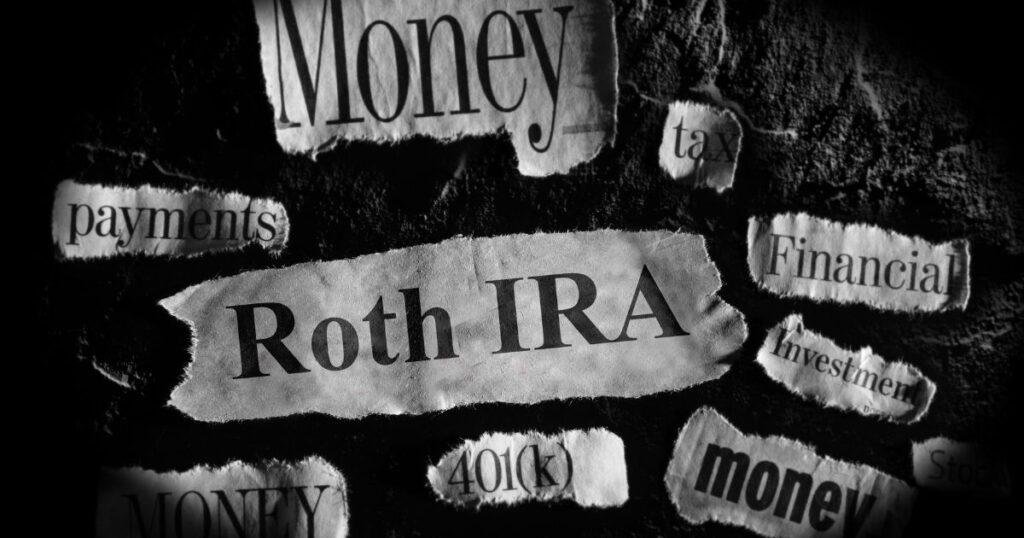Opening a Roth IRA can be one of the smartest money moves for retirement savers in their 20s, 30s, and 40s. Roth IRAs offer unique tax benefits that set them apart from other retirement accounts. By learning the basics of Roth IRAs early and investing consistently, you can maximize tax-free growth and build substantial savings for retirement. This blog covers key concepts for investing in Roth IRAs and managing them wisely over your working years to create a large nest egg. Follow this advice to secure your retirement.
Roth IRA Basics
A Roth IRA is a retirement savings account that allows you to contribute after-tax money up to an annual limit. The contributions grow tax-free over time and withdrawals in retirement are tax-free too. Some key traits:
- Contribution limits for 2023 are $6,500 under age 50 and $7,500 aged 50+.
- Income limits determine eligibility to contribute.
- You can withdraw contributions tax/penalty-free anytime.
- Qualified distributions of earnings are tax-free after age 59.5.
- Funds can be invested across stocks, bonds, mutual funds, and ETFs.
- Accounts are typically opened with brokers or robo-advisors.
Roth IRAs make the most sense for those who expect to be in a higher tax bracket in retirement or benefit from decades of tax-free growth.

Roth IRA VS Traditional IRA
The key differences between Roth and Traditional IRAs involve the tax treatment of contributions and withdrawals:
- Roth contributions are made with after-tax dollars, Traditional with pre-tax dollars.
- Roth earnings grow tax-free whereas Traditional IRAs are tax-deferred.
- Qualified Roth withdrawals are tax-free but Traditional withdrawals are taxed as income.
- Roth IRAs have income limits but anyone can contribute to a Traditional IRA.
- Roth IRA owners never have required minimum distributions but Traditional IRA owners must take RMDs after age 72.
Analyzing current and future tax rates helps determine which IRA type makes more sense for your situation.
Where to Open a Roth IRA
You have several options for where to open your first Roth IRA account:
- Full-service brokerages – Companies like Fidelity, TD Ameritrade, and Merrill Edge offer Roth IRAs alongside unlimited investing options.
- Robo-advisors – Companies like Betterment, Wealthfront, and SoFi provide automated Roth IRA account and portfolio management.
- Banks and Credit Unions – Many national banks and local credit unions allow you to open a Roth IRA and purchase CDs or other investments.
- Employer Retirement Plans – Some 401(k), 403(b), and 457(b) plans let employees make Roth contributions.
Shop around for the account option with the right mix of investment choices, fees, and services.
How to Invest in a Roth IRA
One of the biggest advantages of Roth IRAs is the ability to invest contributions for tax-free growth potential. Follow core investing principles:

- Choose an appropriate asset allocation – Stocks, bonds, and other assets should align with your timeline and risk tolerance. Become more conservative over time.
- Diversify broadly – Invest across market sectors, geographies, sizes, classes, industries, and styles to reduce risk.
- Reinvest earnings – Reinvest dividends, interest, and capital gains for compound growth.
- Use low-cost index funds – Minimize investment fees that erode returns over decades.
- Rebalance periodically – Realign your holdings to the target asset allocation as needed.
- Automate contributions – Set up automatic monthly transfers into your Roth to maximally fund it.
When to Tap Roth IRA Funds
The earnings portion of Roth IRAs is designed specifically for retirement income. However, you can access contributions anytime. It’s best to develop an organized withdrawal strategy:
- Avoid withdrawals from earnings for non-retirement purposes.
- Take only what you need each year to make funds last.
- Withdraw contributions first without tax/penalty.
- Tap earnings strategically when you’re in a low-tax year.
- Take RMDs from Traditional IRAs first if possible.
- Never withdraw from a Roth IRA to avoid RMDs as it backfires.
Remember, Roth IRAs are generally meant for retirement so treat withdrawals carefully.
Roth IRA Conversions
If you have Traditional IRA funds, you may benefit from converting some or all of the balance to a Roth IRA to capitalize on tax-free growth. This makes the most sense when:
- You expect higher future tax rates during retirement withdrawals.
- Your income is lower in the current tax year.
- You can pay the conversion tax from non-IRA funds.
- Your retirement horizon is over 10+ years.
Analyze the tradeoffs with your financial advisor or tax professional. Roth conversions can unlock tax advantages.
Conclusion
Investing in a Roth IRA early in your career sets the stage for tax-free retirement income. Take advantage of decades of tax-free growth and compounding to accumulate substantial savings. Partner with a fee-only financial advisor for ongoing guidance. With smart Roth IRA planning while you are young, retirement security is within your reach.

FAQs About Investing in Roth IRAs
How is a Roth IRA different from other retirement accounts?
Unlike Traditional IRAs and 401(k)s, Roth IRAs are funded with after-tax dollars and allow for completely tax-free withdrawals in retirement. There are also income limits to contribute.
What are the annual Roth IRA contribution limits?
For 2023, you can contribute up to $6,500 to a Roth IRA if you are under age 50. The limit rises to $7,500 once you turn 50 allowing for catch-up contributions.
When can you withdraw earnings from a Roth IRA tax-free?
You can withdraw Roth IRA earnings with no taxes or penalty once you reach age 59.5 provided your account has been open for over 5 years.
Can you withdraw Roth IRA contributions at any time?
Yes, you can withdraw the money you originally contributed to a Roth IRA anytime tax and penalty free. The tax-free withdrawal of earnings has more restrictions.
What age do you have to start taking Roth IRA required minimum distributions (RMDs)?
Unlike Traditional IRAs, Roth IRAs are not subject to any required minimum distributions during the original owner’s lifetime so they can grow tax-free indefinitely.




